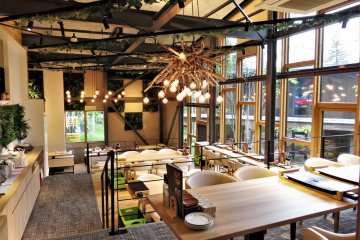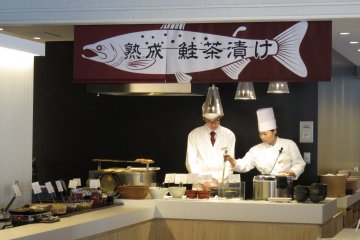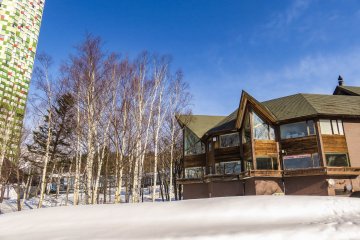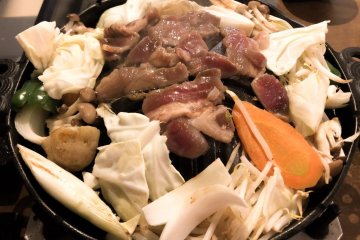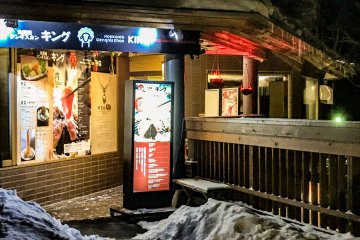The people of Hokkaido have a lifetime of experience in turning things over to “cook” them, whether it is wet gloves over a heater from a snow storm, or lamb over a hot grill.
It is all part of the joys of communal cooking here, the constant turning, waiting, turning, thinking, is your meal cooked yet, or should I just take the plunge and eat it. It is easy to take the food off too early or not turning it enough, to ensure that every side is grilled to perfection.
When you cook Genghis Khan, it is said that you should put all the ingredients on at once but gambling your dinner on a well meaning amateur mean you can’t keep an eye on everything, and risk burning any one of the nine items you just put on. The mushroom should be slightly caramelised, but still retaining the juices. You want to slightly char the capsicum, but not too much.
Maybe I should have titled this adventure, "How to cook like Genghis Khan", for no-one in their right mind would want to cook Genghis Khan, the legendary warrior to millions of people through the ages. It would be sacrilegious. How to cook like Genghis Khan, on the other hand, evokes patience, strategy and perseverance, all of which makes sense snuggling up to the cooker on a snowy winter's night.
The idea is to first place the vegetables at bottom of the domed skillet, and the meat on top. The fat dripping from the meat will marinate the vegetables. While most people order lamb for their Genghis Khan experience, others can take the plunge and initiate themselves with venison or wagyu beef. If you want to try mouth-watering slivers of beef tongue, then make sure you add some salt and pepper, and serve it with a squeeze of lemon juice. On the other hand, the dipping sauce with chilli notes, soy and sesame adds complexity to the vegetables and lamb.
Cooking your own dinner can be a fun experience for two people but sharing one skillet amongst four adults may test your mettle. The metal skillet does look like a soldier’s helmet, but the heat all goes to the middle, making it hard to cook the vegetables for the impatient.
While Hokkaido is famous for Genghis Khan, what has this got to do with the Mongolian warrior? It was thought that Mongolian soldiers would cook food on their dome-shaped metal helmets.
On the other hand, is this really Japanese food? Indeed, what is Japanese food? Ezo deer is native to Hokkaido while sheep was introduced much later. Perhaps the only similarity with Mongolia is climate, for it tastes nothing like Mongolian lamb, or at least the variety you get in Chinese restaurants. So, you may ask yourself, is it really Japanese or Mongolian, or even Chinese? Or a fusion of all three. Perhaps, it is really a way of cooking, rather than the ingredients itself, that defines “Genghis Khan”. In the same way the Japan has redefined Christmas or Halloween traditions and cuisines.
An outdoor campfire may be a good idea in the steppes in summer, but not in a snow storm in winter, whether in Mongolia or Hokkaido. So, snuggle up inside and bring a smile to your face with the sizzle of meat fat rendering on the skillet with your significant other.




